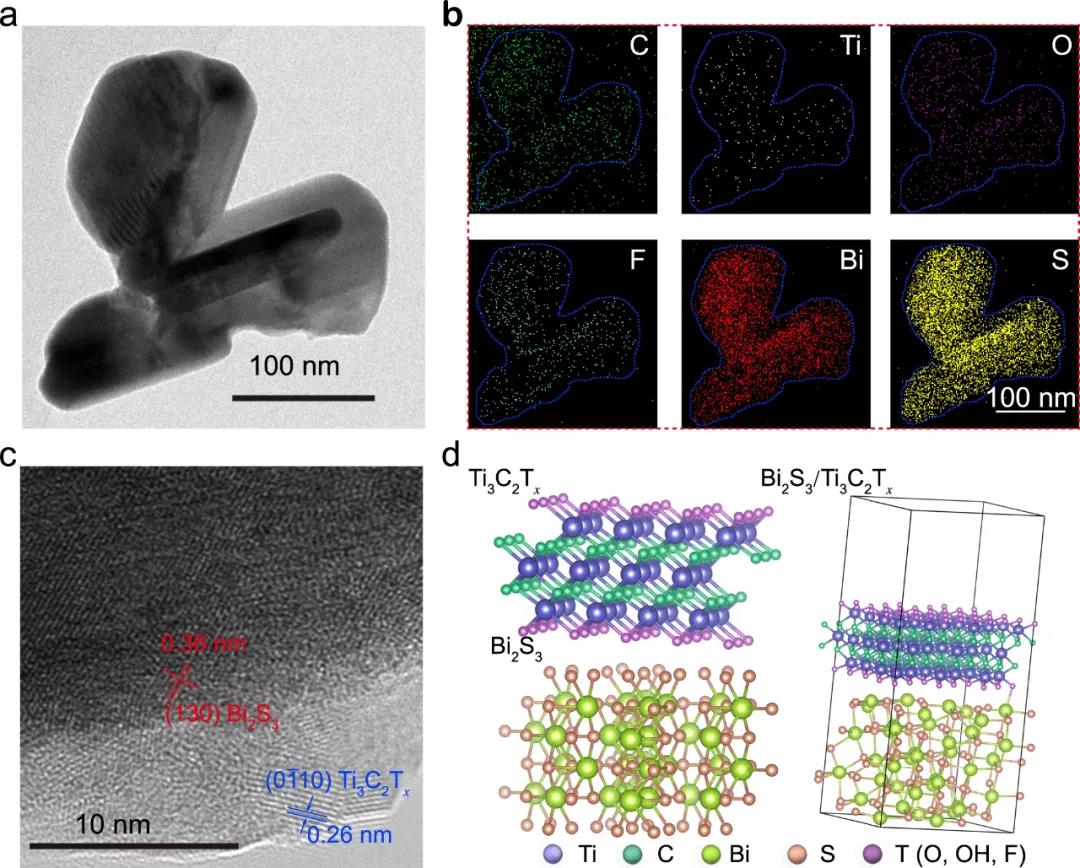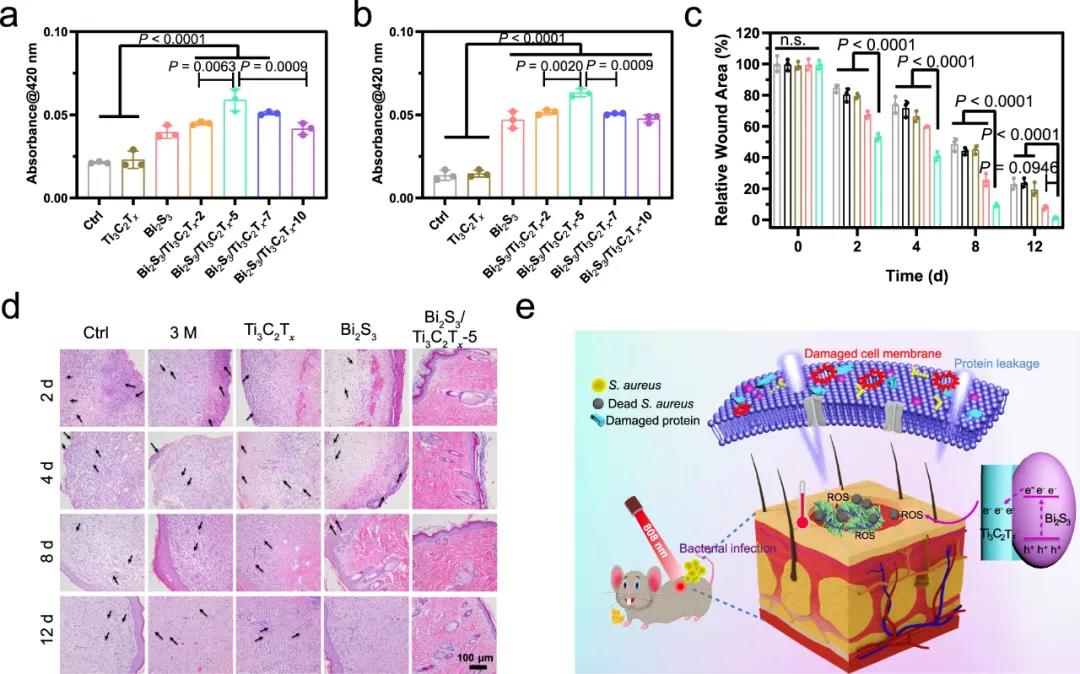Wu Shuilin/Liu Xiangmei Nature: MXene material kills bacteria by rapid light excitation
QQ Academic Group: 1092348845
Detailed
With the emergence of bacterial resistance, environmentally friendly optoelectronic materials are expected to become ideal alternatives to antibiotics. Professor Wu Shuilin of Tianjin University and Professor Liu Xiangmei of Hubei University used the contact potential difference between Ti3C2Tx and Bi2S3 to design an interface Schottky junction based on Bi2S3/Ti3C2Tx.

Key points of this article:
(1) Different work functions will induce local electrophilic or nucleophilic regions, and the self-driven charge transfer on the interface will increase the local electron density of Ti3C2Tx. Studies have shown that the formed Schottky barrier will inhibit the backflow of electrons and promote the transfer and separation of charges. Thanks to the photocatalytic activity of Bi2S3/Ti3C2Tx, the content of active oxygen generated under 808 nm near-infrared light radiation is also greatly increased.

(2) The experimental results show that the photocatalytic platform can kill 99.86% of Staphylococcus aureus and 99.92% of Escherichia coli with the assistance of heat within 10 minutes. In summary, this work fully proves that the interface engineering Schottky junction based on work function can effectively eliminate bacterial infection.

references:
Jianfang Li. et al. Interfacial engineering of Bi2S3/Ti3C2Tx MXene based on work function for rapid photo-excited bacteria-killing. Nature Communications. 2021
https://www.nature.com/articles/s41467-021-21435-6

Key points of this article:
(1) Different work functions will induce local electrophilic or nucleophilic regions, and the self-driven charge transfer on the interface will increase the local electron density of Ti3C2Tx. Studies have shown that the formed Schottky barrier will inhibit the backflow of electrons and promote the transfer and separation of charges. Thanks to the photocatalytic activity of Bi2S3/Ti3C2Tx, the content of active oxygen generated under 808 nm near-infrared light radiation is also greatly increased.

(2) The experimental results show that the photocatalytic platform can kill 99.86% of Staphylococcus aureus and 99.92% of Escherichia coli with the assistance of heat within 10 minutes. In summary, this work fully proves that the interface engineering Schottky junction based on work function can effectively eliminate bacterial infection.

references:
Jianfang Li. et al. Interfacial engineering of Bi2S3/Ti3C2Tx MXene based on work function for rapid photo-excited bacteria-killing. Nature Communications. 2021
https://www.nature.com/articles/s41467-021-21435-6
- Previous: Jida/Semiconductor Ins
- Next: IF 16! Reprogramming m


 mxene academic
mxene academic